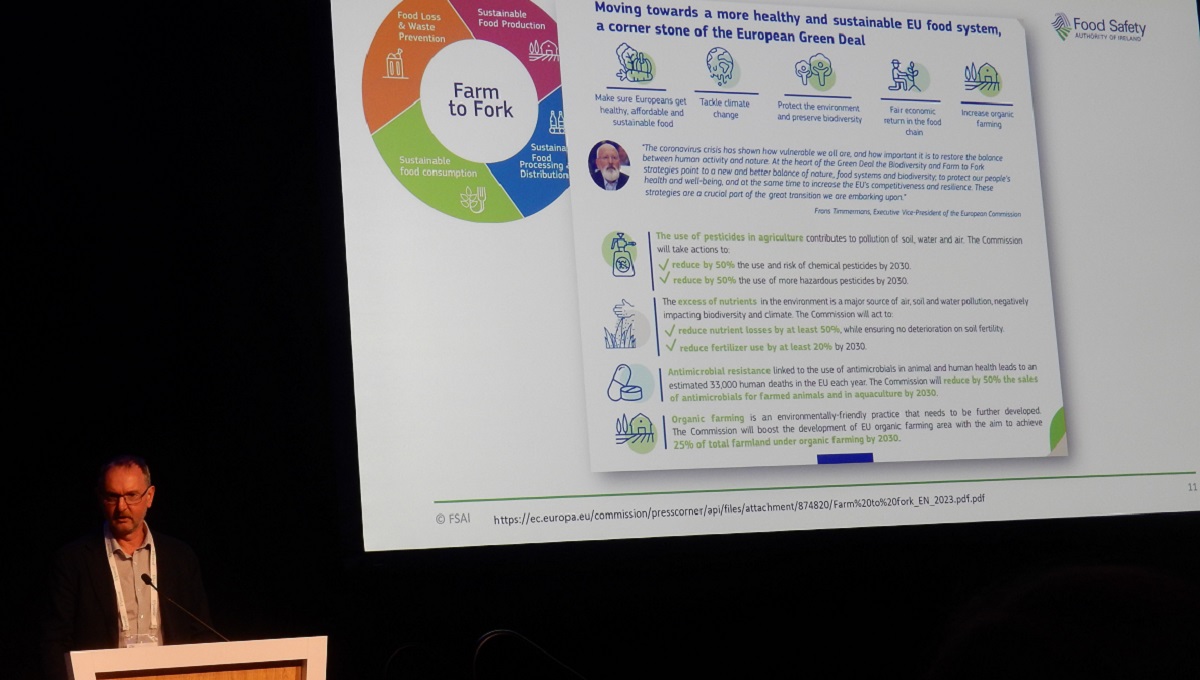ABERDEEN, SCOTLAND — Attendees at a major conference have been urged to “wave the food safety flag” to keep the topic on the table during discussions around moving to more sustainable food systems.
Wayne Anderson, director of Science and Standards at the Food Safety Authority of Ireland (FSAI), said it was crucial that food safety practitioners are adding context to policy and are on action groups.
Speaking at the International Association for Food Protection (IAFP) European Symposium in Aberdeen, Anderson covered a number of topics such as the EU Green Deal, Farm to Fork strategy and Common Agricultural Policy (CAP) reforms as well as mentioning several emerging risks.
These included work by the European Food Safety Authority (EFSA) on aflatoxins in corn because of climate change; the risks from alternatives to pesticides; exchanging chemical fertilizer for organic fertilizer; environmental contamination offsetting yield effects with new land; and persistent organic pollutants (POPs) and copper.
Unintended consequences
“We need to think outside the box about some of the things that might happen to avoid the law of unintended consequences. Of course, some things are positive. If we do systems thinking, we need people from different disciplines, reflecting the One Health approach. The national policy context is complicated and this must be replicated in other EU member states,” said Anderson.
“Global food safety is really complex, there are loads of actors, feedback loops and dependencies. Small changes might cause big issues but we are going to make substantive changes, we would be kidding ourselves if we think unexpected food safety issues might not arise. Some interventions will be due to innovation and be legit but some will be illegitimate and be non-compliances.
“There is a whole area we are not looking at. With sustainability we are told food safety is a given; food safety is not a given or we’d be out of jobs. We need to raise food safety awareness more. Food safety is buried in the UN Sustainable Development Goals. We all want to get there, but how and are we going to compromise food safety?”
Protected urea example
Anderson also covered the impact of the war in Ukraine and related sanctions on global trade and implications on energy prices. He said problems range from there being people who can’t afford the food that is being produced, to obesity stats in children in Ireland.
One area where the food safety flag is not waved early enough in Ireland is protected urea, said Anderson.
“If we don’t raise the flag about food safety to the government, no-one else is going to do it. We didn’t do that with protected urea so we have got to improve. In 2019, I got a call from a food business worried about the first Irish climate action plan. Targets were set to establish protected urea, no one had done any food safety studies but they were trying to solve the fertilizer issue. I’m fairly sure it isn’t a problem but would like to see the data.”
Use of protected urea nitrogen fertilizer is the main option for Irish agriculture to reduce greenhouse gas emissions and meet ammonia reduction targets. Research agency Teagasc has been looking at the area with several projects ongoing or completed, including one on protected urea residues in milk. The 2023 Climate Action Plan set a target of 80 to 90 percent uptake of protected urea on grassland farms by 2025.
(To sign up for a free subscription to Food Safety News, click here.)

